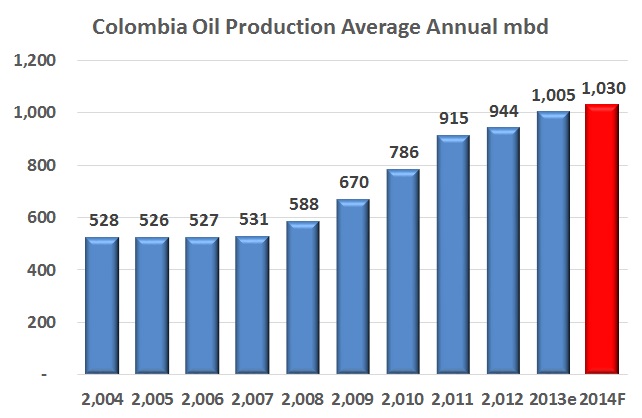
The Colombian Petroleum Association (ACP) says growth next year will only be 2.3% which means a projection of 1.03mmbd versus the expected result for this year of 1.006mmbd. The graph shows this means fairly flat growth.
The Municipality of Tauramena, Casanare held its public referendum on Sunday, December 15th and those who came out voted a sounding no, although the total turnout amounted to just over 34% of the population, narrowly passing the 33% turnout needed for the vote to be valid.
The government engaged a multi-pronged push back against a public referendum that looks to reject oil production near municipal water sources in Tauramena, Casanare which included ministers and Ecopetrol’s (NYSE:EC) president Javier Gutiérrez.
Ecopetrol (NYSE:EC) and Talisman announce commercial viability in CPO-09 block, which will add 35 million barrels of reserves and marks the second addition by the NOC in as many weeks.

Ecopetrol (NYSE:EC) has declared to Colombia’s National Hydrocarbons Agency the commercial viability of the Eastern Caño Sur block, adding 22.4 million barrels of 1P reserves.
The Colombian government, by way of the Ministry of Mines and Energy (MinMinas) signed a memorandum of understanding with the US government in Washington DC to cooperate on energy matters.

The National Hydrocarbons Agency (ANH) has set its sights on the 2014 Round to award new E&P contracts as a potential boost to investment in the hydrocarbons sector.
The Association of Colombian Oil Engineers (Acipet) says that there is a deceleration occurring in the oil industry resulting from the saturation of investment and the price of crude internationally.
Colombia’s oil industry has marked sustained growth over the last several years, but if the prospects of the industry are to continue into a bright future, more reserves must be discovered and added to its ever shortening supply looking forward.
An article in the local paper Noticiero del Llano quoting unnamed “ecologists” is calling on Ecopetrol to assume the social responsibility of exploration and production, and called on readers to voice concerns to a mobile unit of the NOC designed to receive complaints from the community.